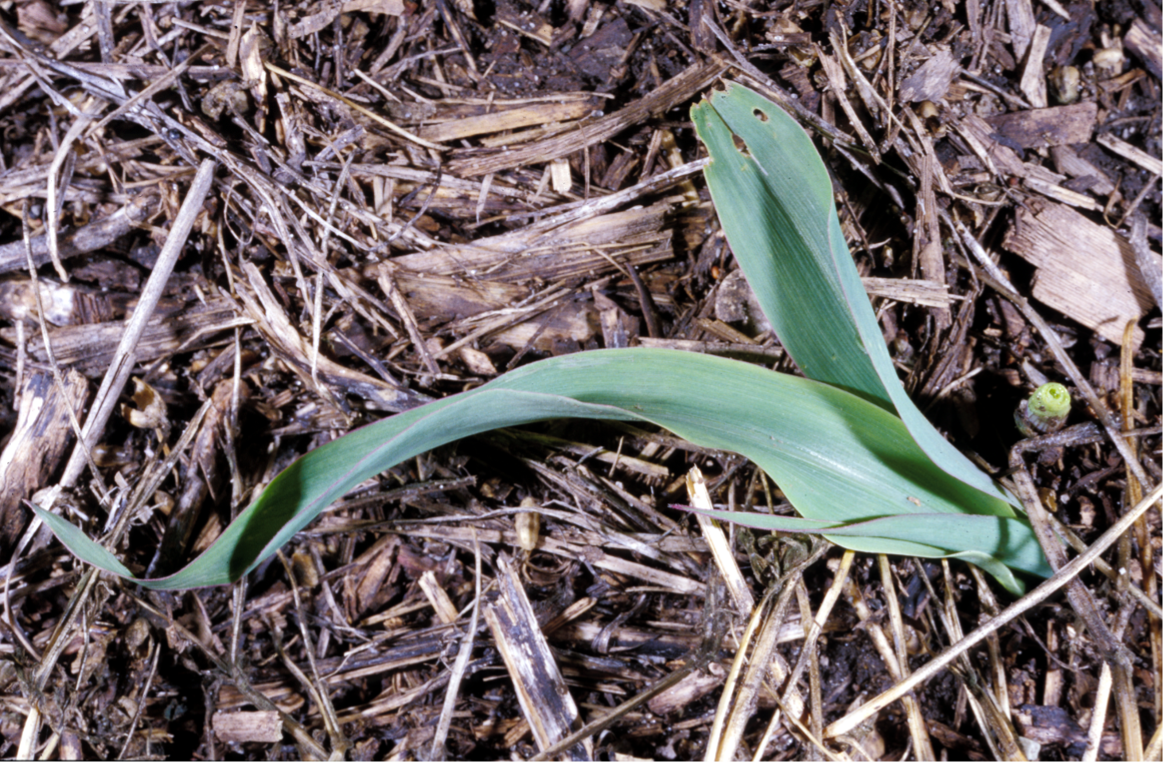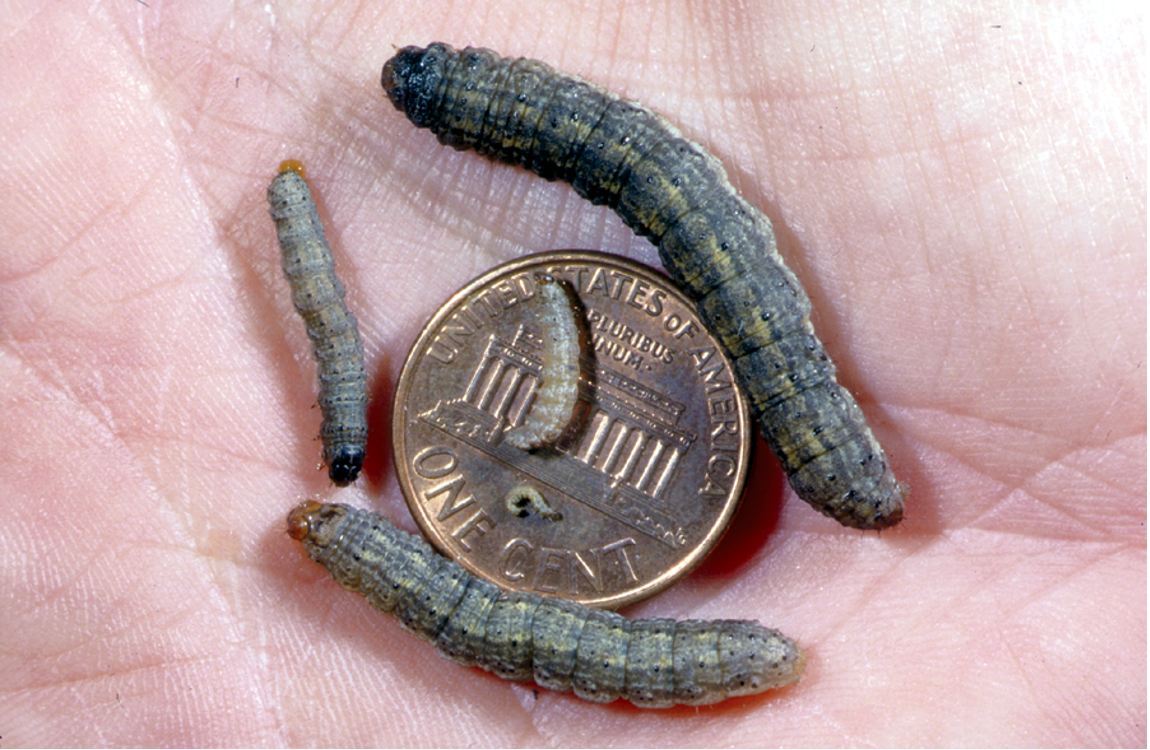Every spring, black cutworm moths and armyworms invade our state. They don’t overwinter here, but move north each spring seeking sites to lay eggs. Both are sporadic and unpredictable and although trap counts help, they are not always a reliable predictor of larval populations. At this time, when we may see damage to crops, it’s worth reviewing a few key parts of the biology of these annual invaders.
Larvae of both moths will be actively feeding now. The increased popularity of cereal rye as a cover crop presents new opportunities for egg-laying female armyworms to find attractive food sources (grasses are their favored hosts), while black cutworms may favor broadleaf weeds, including chickweed and a range of cover crops.
For both species the highest risk for egg laying occurs where dense vegetation (either cover crops or winter annual weeds) is present. Fields with sparse weeds are not likely to harbor as many larvae. In both cases, the risk comes when annual weeds or cover crops are terminated and the hungry caterpillars move onto the main crop for feeding – neither black cutworms or armyworms are obligate corn feeders but both will do well on corn seedlings, with black cutworm able to feed on soybean as well. Armyworm larvae will attempt to feed on soybean, but cannot effectively digest the foliage and will die shortly afterwards.
The question about ideal termination often arises. Ideally, cover crops or dense annual weeds will be terminated 2-3 weeks before corn emergence. With the wet weather of most springs, this often is not possible. A period of weeks is ideal, but there is not a magic number of days to starve out caterpillars. The rule of thumb is that the longer the period between termination of cover crops or weeds and emergence of the main crop, the better. Caterpillars need to feed often to survive and cannot go without food for long, so even a few days of no host plants will reduce their populations dramatically.

The five larval instars, or stages, of black cutworm. Only the larger instars damage plants by “cutting”, as shown; younger larvae will notch leaf edges.
One last reminder: Don’t be dependent on traited-corn, as high armyworm or cutworm infestations may still cause significant damage before the Bt-proteins suppress their feeding. An ideal reference to understand which Bt-traited corn has efficacy against specific insects is the “Handy Bt Trait Table.” This table, produced by Chris DiFonzo, Field Crops Entomologist at Michigan State University, is worth a look. It can be downloaded HERE. Remember that seed-applied neonicotinoid insectides do not have efficacy against armyworm, although there are many effective options for control with foliar insecticide sprays. A reminder that with this insect, especially when they are “marching” in large numbers, scouting for caterpillars and damage still wins the day.




